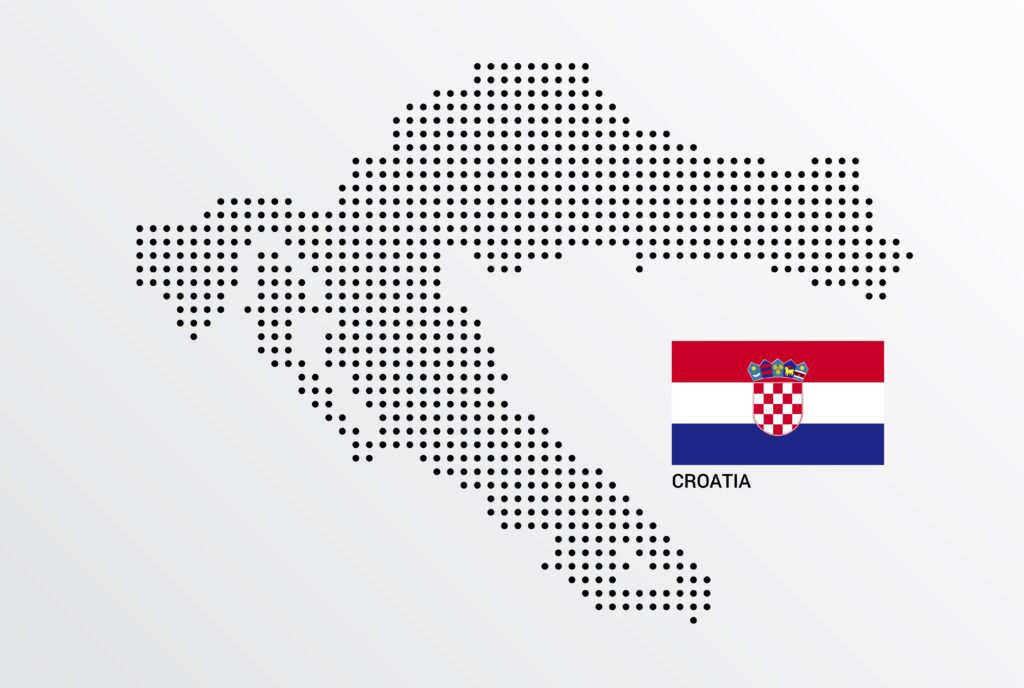
The 2025 local elections in Croatia serve as a significant indicator of the current political climate and potential shifts on the national stage. An in-depth examination of the election results, voter turnout, coalition patterns, and the performance of individual political actors provides valuable insights into the directions in which Croatian society and politics are heading. This analysis offers an overview of key trends, regional and political specificities, and the implications these local elections may have for the upcoming parliamentary elections.
Intensified Political Polarization
These local elections marked a new phase of political polarization, further solidifying the dominance of the two major parties, HDZ and SDP. Smaller parties such as Most, the Homeland Movement, and IDS experienced a significant decline in support. Independent lists, which had been gaining traction until 2021, were largely marginalized this year, with the electorate clearly divided between two political poles.
HDZ: Strategic Offensive and Robust Party Infrastructure
HDZ reaffirmed its position as the dominant political force at the local level, leveraging its deeply rooted infrastructure and effective ground mobilization. Their multifaceted campaign included the involvement of ministers as candidates, promises of central government investments, and the utilization of the State Attorney’s Office, which targeted opposition candidates, particularly in the capital.
The “catch-all” strategy employed by HDZ leader and Prime Minister Andrej Plenković yielded significant results. Dalmatia largely came under HDZ control, including Split, symbolically considered the crown jewel of this election cycle. Tomislav Šuta secured a convincing victory, while generational shifts in favor of HDZ occurred in Zadar and Osijek. Notably, Nataša Tramišak, former Minister of Regional Development and EU Funds, became the first female prefect of Osijek-Baranja County. These emerging politicians are opening both national and European perspectives for their local communities.
HDZ made significant inroads in urban areas, challenging the stereotype of being a party representing only rural regions. Their strong presence in Dalmatia and Slavonia, along with successes in cities like Sisak and Varaždin, underscores HDZ’s capability as the only truly nationally organized party.
SDP: Organizational Challenges and Strategic Shortcomings
SDP faces deep organizational issues. Despite being the largest opposition party, they lacked candidates for mayors and municipal heads in 78 local governments, indicating a serious personnel crisis. Where they achieved good results, such as in Koprivnica, it was due to the quality of local individuals rather than party strategy.
The loss in Rijeka, a former SDP stronghold, was particularly painful. Candidate Sandra Krpan failed to reach the second round. In Zagreb, SDP operated in the shadow of the Možemo! platform, lacking visibility and ambition to take a leading role. This highlights SDP’s continued failure to recognize the importance of organized grassroots work and building a political network between elections.
Možemo!: Strong in Zagreb, Invisible Elsewhere
The Možemo! platform maintained its position in the capital, where the Hipodrom affair paradoxically mobilized voters in their favor. Media and institutional campaigns against them reinforced the narrative of Možemo! as victims of the “big system,” garnering additional support. Incumbent Mayor Tomislav Tomašević, through effective planning and active fieldwork, achieved a strong result, ensuring a stable government for his second term. His opposition to construction lobbies and various interest groups previously benefiting from the city budget was evidently recognized and rewarded by citizens.
However, outside Zagreb, Možemo! lacked visible successes. The absence of recognizable political figures with national appeal remains a key weakness. Although Mayor Tomašević holds the third most powerful political position in the country, he has not positioned himself as a national leader, nor does he appear to have such ambitions.
Significant Political Shift in Rijeka and the Collapse of IDS in Istria
After more than three decades of dominance, SDP lost control of Rijeka, Croatia’s third-largest city. This marks the end of a political era and the beginning of a new one embodied by Iva Rinčić, a professor at the Faculty of Medicine in Rijeka. Her victory was facilitated by internal SDP divisions, long-standing citizen dissatisfaction, and support from smaller parties and local entrepreneurs. In a city where strong animosity towards HDZ persists, Rinčić offered change without a “rightward turn,” aiming instead for more efficient, business-friendly local policies. Her campaign, significantly funded and supported by entrepreneur Boris Popović, owner of Alarm Automatika, resonated with voters seeking a shift in the city’s development approach. Conversely, PGS and SDP successfully retained positions in the city of Krk, with long-time Mayor Darijo Vasilić securing his ninth term, indicating local stability in that part of Kvarner.
Rijeka’s political upheaval is part of a broader transformation in Croatia. In Istria, once an undisputed IDS stronghold, the regional party suffered a significant defeat. IDS failed to reach the second round in the prefectural elections and lost influence in major cities like Pula and Pazin. A symbolic loss occurred in Vodnjan, where agronomist Edi Pastrovicchio, backed by entrepreneurs from the renowned company Infobip, ended IDS’s two-decade rule in the first round. Currently, IDS holds power only in Rovinj and Poreč among the five largest Istrian cities. Although they achieved relative success in smaller towns and municipalities, the downward trend is evident, casting doubt on IDS’s future. Honorary party president Ivan Jakovčić, still influential within the party and Istria, signals a potential readiness for IDS to collaborate with HDZ for the first time in history.
Most: A Return to Reality
Despite efforts to project optimism on social media, Most’s reality is far from bright. The party’s most visible and active member, Nikola Grmoja, failed in his attempt to reclaim Metković, the city where Most began its political ascent. Grmoja was eliminated in the first round, with HDZ’s Dalibor Milan becoming mayor, solidifying HDZ’s control in a symbolically important Most stronghold.
Božo Petrov also fell short, reaching the second round in the race for Dubrovnik-Neretva County prefect but ultimately losing, further weakening Most’s local position. A victory in Sinj, though notable, was insufficient to improve the overall impression—Most emerged from these elections wounded, facing serious questions about its political direction and relevance.
Homeland Movement: Losing Vukovar Strikes at the Core Identity
The loss of Vukovar was a significant blow to the Homeland Movement, a nationalist party that heavily relied on the symbolic capital of the city. Their candidate, Domagoj Bilić, was defeated by Marijan Pavliček of the Sovereigntists, indicating that voters did not forgive Ivan Penava’s withdrawal from the race in exchange for a deputy prime minister position.
Penava’s calculation that his withdrawal would go unnoticed proved incorrect. Voters chose an alternative perceived as more “authentic” and less compromised by coalitions with HDZ. This defeat can be interpreted as a broader message from the right-wing electorate, increasingly intolerant of compromises with the ruling structures. Additionally, Vukovar citizens expressed dissatisfaction with Penava’s governance, citing nepotism and favoritism towards close business associates.
In these elections, the Homeland Movement independently secured power in only one municipality—Otok—while other successes were primarily due to coalitions with HDZ. This situation raises questions about the party’s identity and long-term strategy, especially given its continuous decline since aligning with HDZ.
Centre Party: Decline and the End of a Political Project
The Centre party suffered another significant defeat. Ivica Puljak, former mayor of Split and the party’s face, announced his withdrawal from politics, further destabilizing the already shaky position of the party. His wife, Marijana Puljak, remains in the Parliament, but without a strong political infrastructure, it’s unlikely that the Centre will remain a relevant national player.
At the southernmost part of Croatia, the HDZ lost one of the wealthiest municipalities, Župa dubrovačka, to a local party, marking a historic precedent. Meanwhile, in Međimurje, one of the most developed counties, the Independent Platform “Sjever” led by Matija Posavec confirmed its dominance. The largest party representing the biggest national minority in Croatia, the SDSS, retained almost complete control in municipalities with a majority Serbian population, winning in 14 out of 15 such municipalities. However, these are small, rural municipalities with populations below the national average in terms of development.
A decisive victory was also achieved by Dario Hrebak, the leader of HSLS, who once again became mayor of Bjelovar—a city that has been intensively developing in recent years. According to official results, Hrebak, whose party is nationally in coalition with HDZ, is entering his third mayoral term with support reaching as high as 81.13%.
Politics and Construction – The Invisible Hand of Local Elections
A distinctive feature of the 2025 local elections was the unprecedented influence of the construction lobby. Campaign financing, the shaping of political messages, as well as the creation of topics surrounding General Urban Plans (GUPs), permits, and planning—all were strongly marked by the interests of the real estate sector. In many areas, candidates backed by construction interest groups achieved significant successes.
A Fight for Money, Not Ideology
Ultimately, local elections in Croatia are not just a question of ideology but a battle for control over public funds. The combined budgets of cities, counties, and municipalities amount to nearly 15 billion euros, and political parties increasingly view local government as a key platform for maintaining influence, employing personnel, and sustaining clientelist networks.
